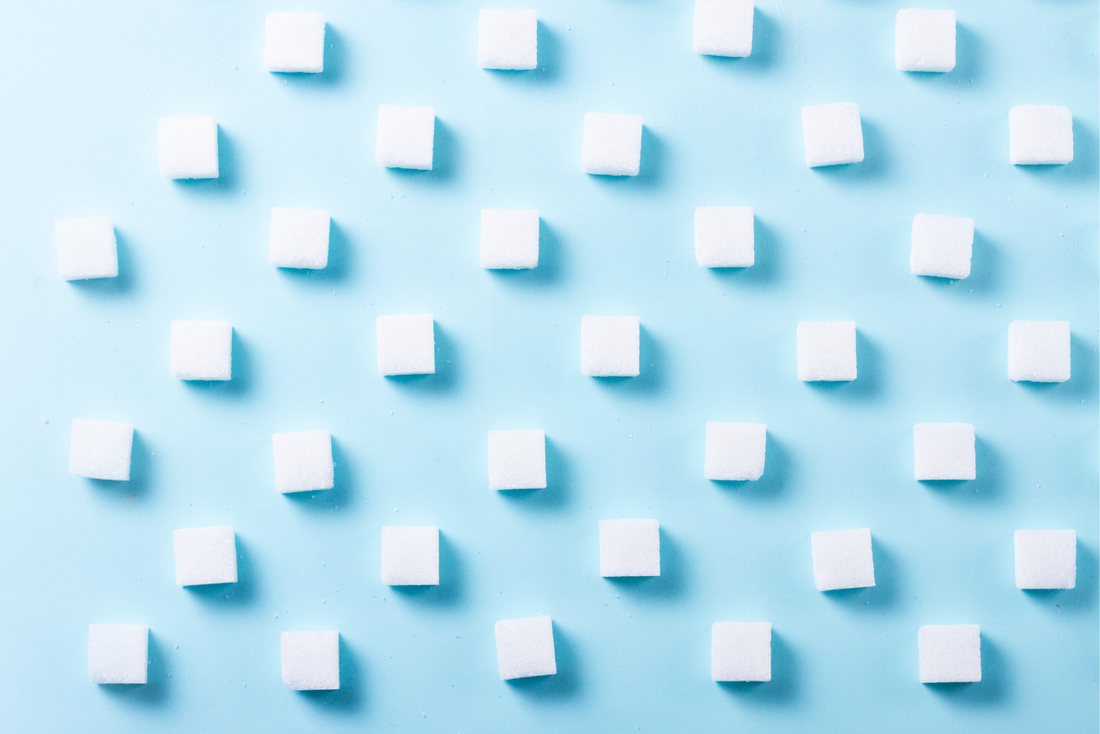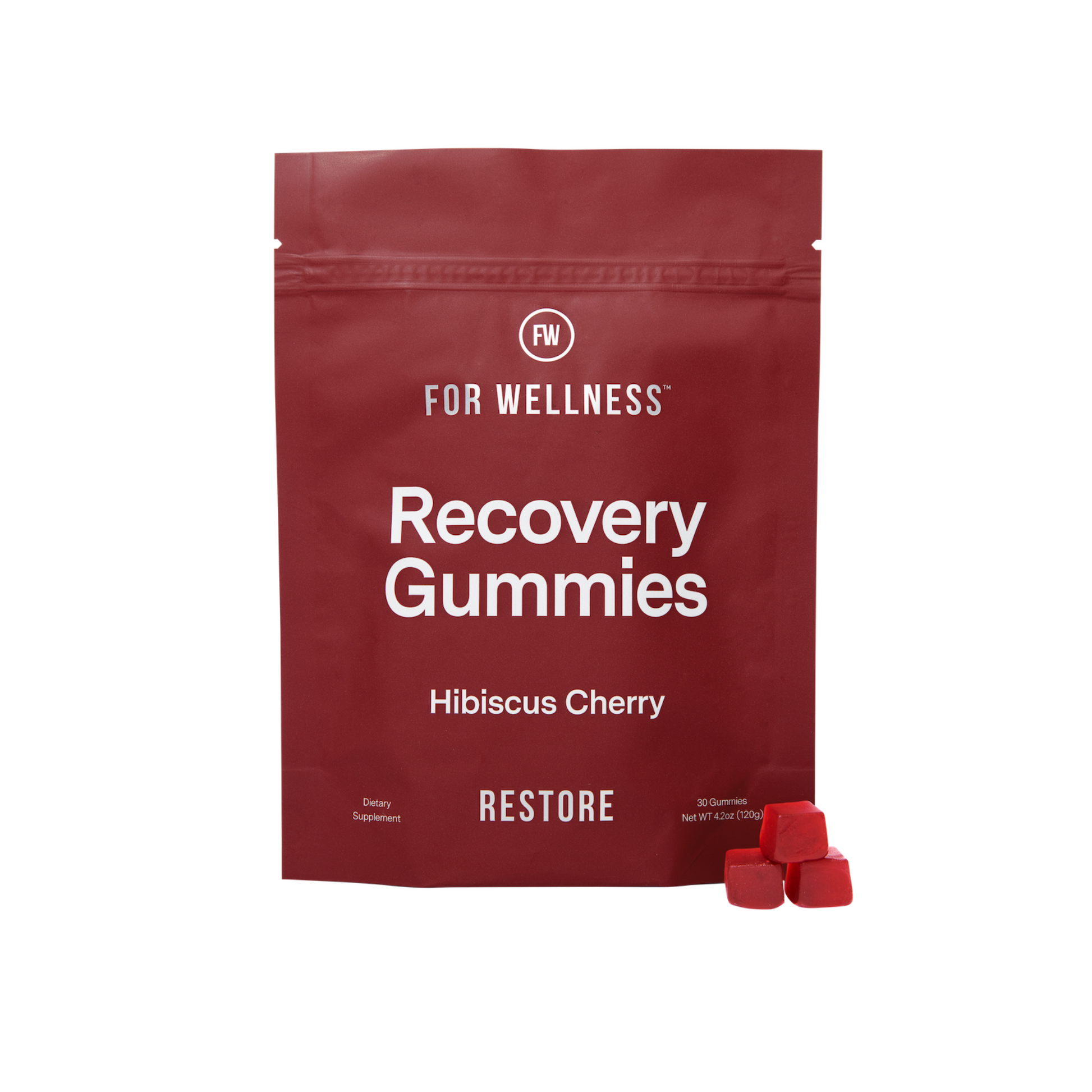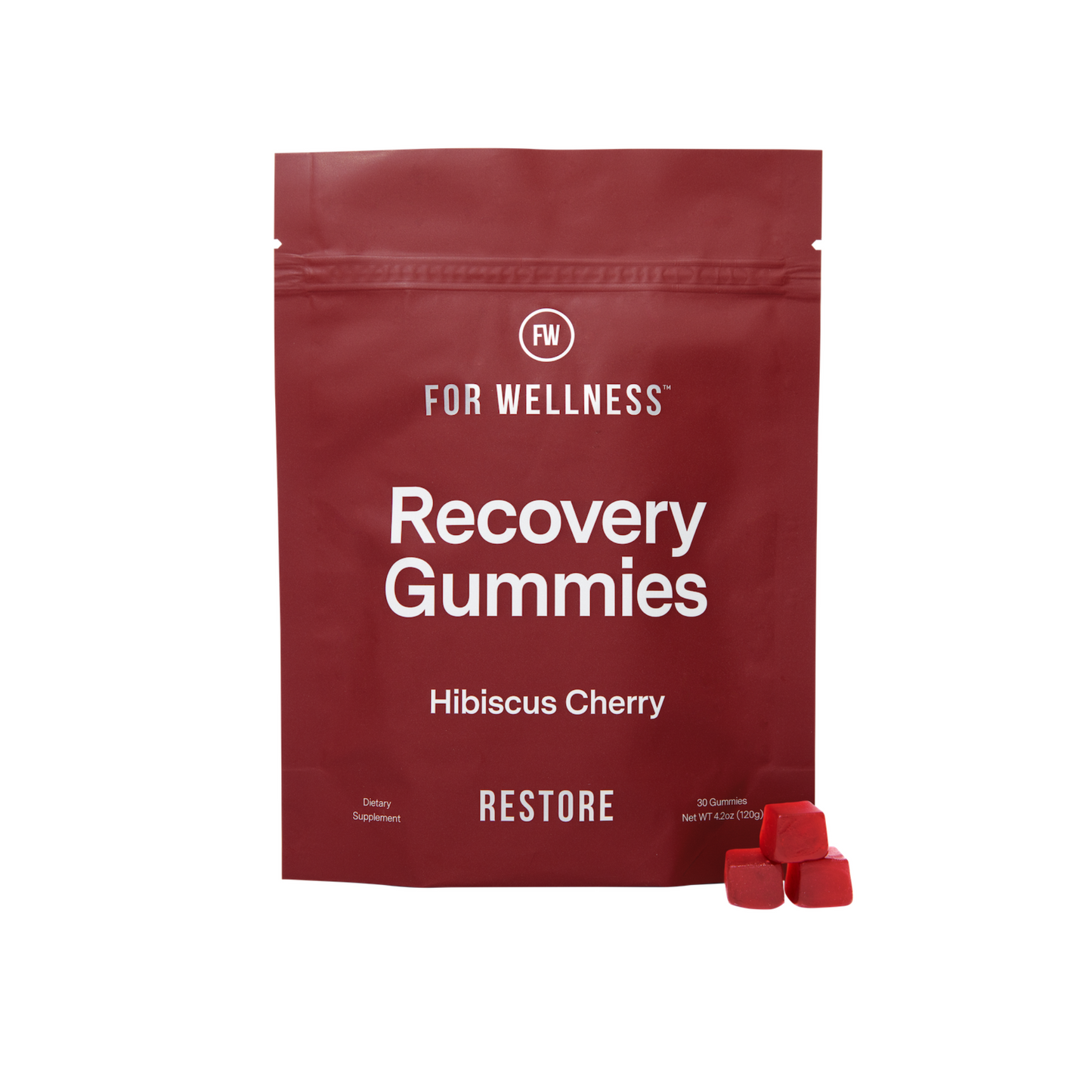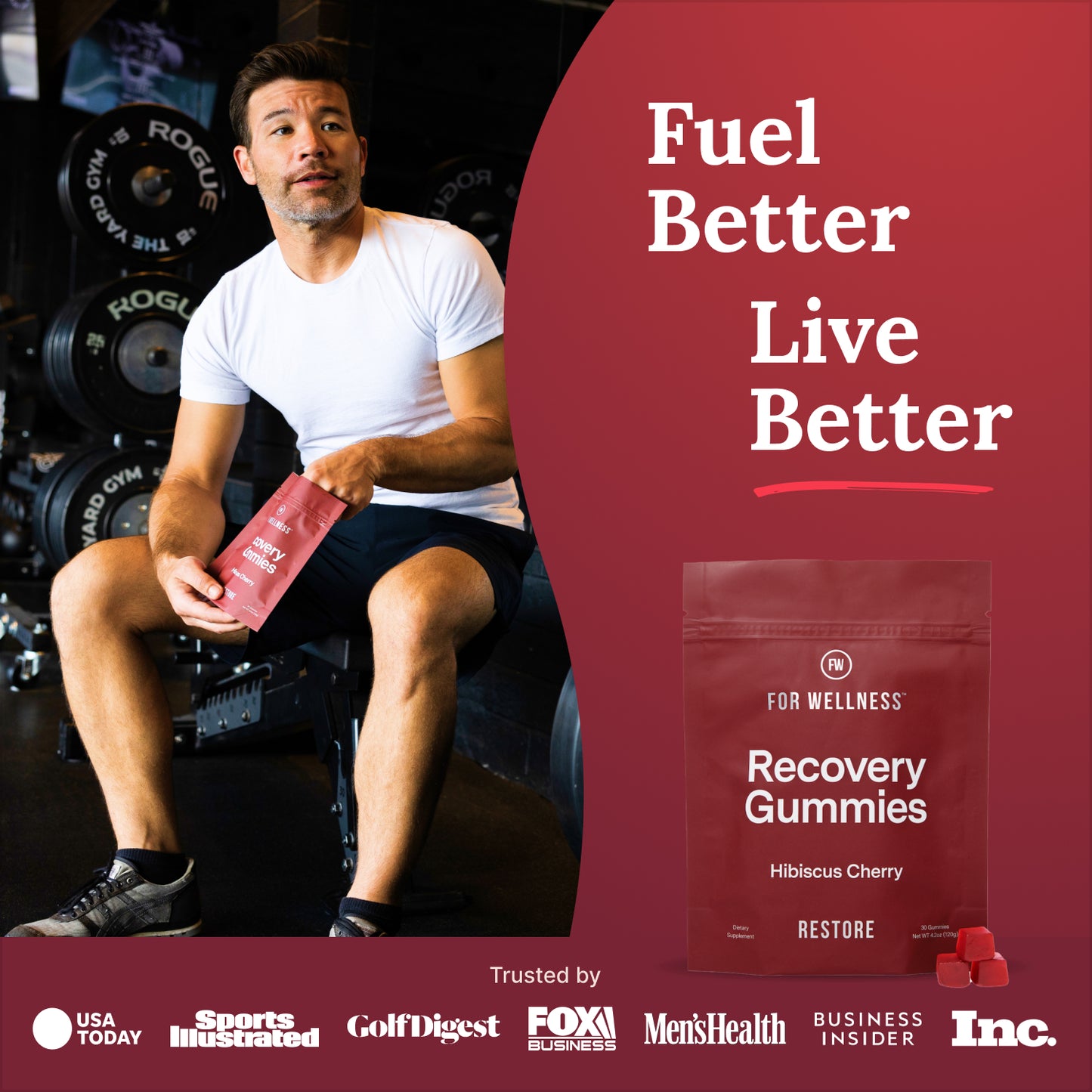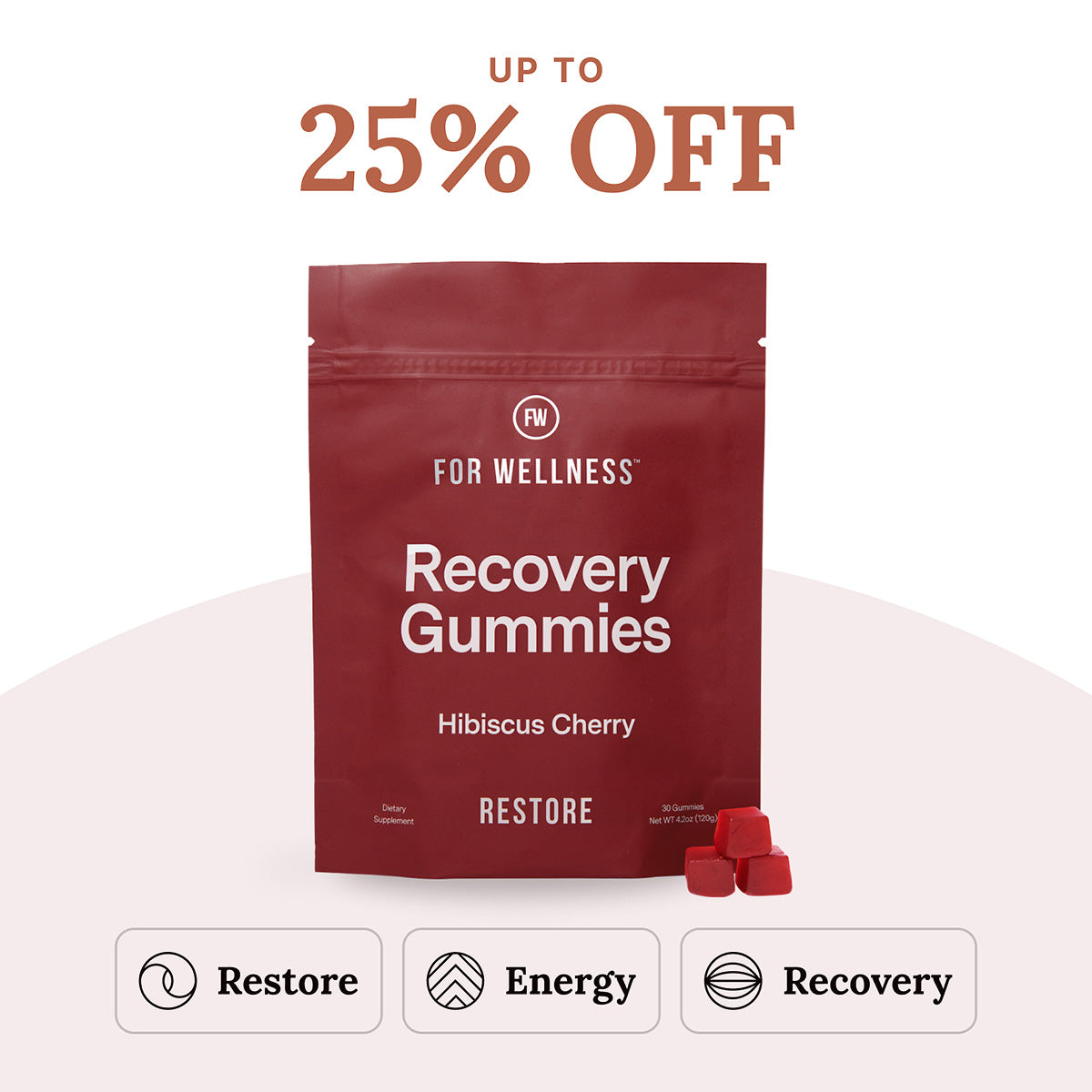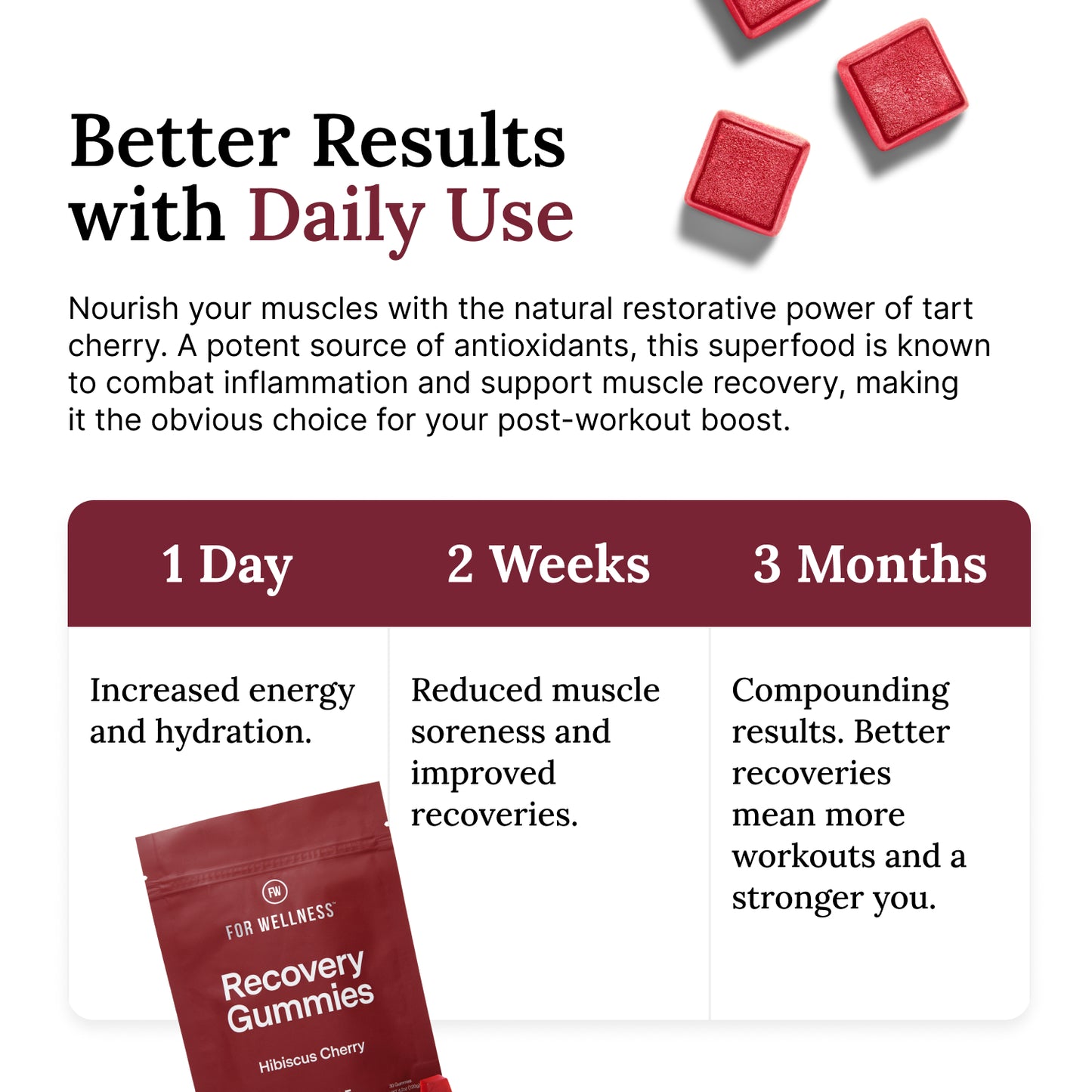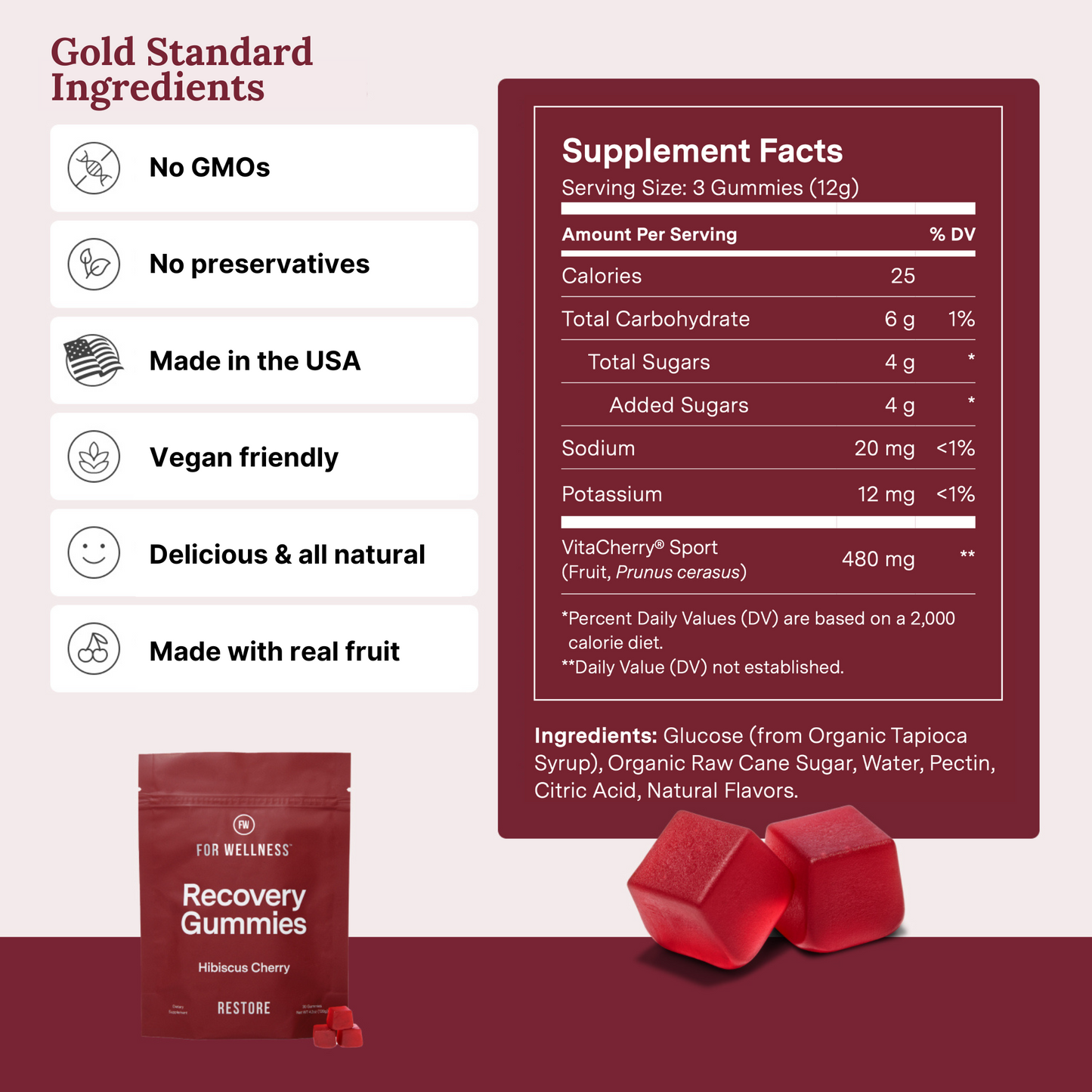Think all sugar is enemy #1 for your health and wellness goals? Think again.
In a world brimming with sweet temptations, the truth is that not all sugars are created equal. One type may actually help optimize your performance. So, which type of sugar takes the gold medal?
We’re exploring the science behind glucose, fructose, and sucrose, the three primary forms of sugar, to find out. Understanding how these impact your body and blood sugar levels is essential for making informed dietary choices that fuel your purpose.
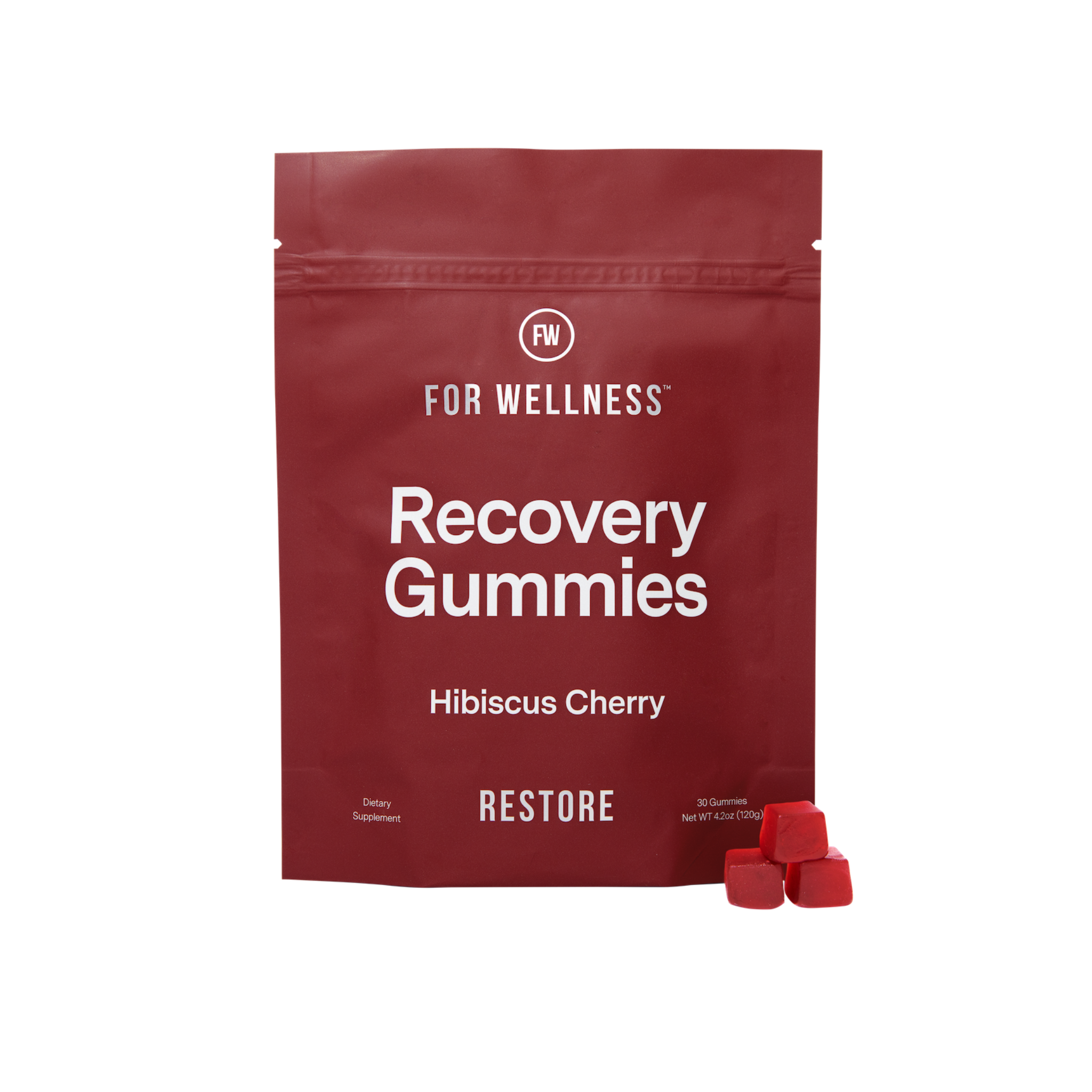

Recovery Gummies - Restore
-
Supports muscle recovery and combats soreness.
-
Full of antioxidants and replenishes electrolytes
-
Boosts energy and focus with all-natural ingredients.
-
Tastes incredible with juicy cherry flavors.
The Great Sugar Showdown: Glucose vs. Fructose vs. Sucrose
Scientists broadly classify sugar into two categories:
Monosaccharides (sugar with a single molecule) are the most basic form of sugar, hence the term “simple sugar.” The most common monosaccharides are glucose, fructose, and galactose (a sugar in dairy products). Sucrose, on the other hand, is a disaccharide (two monosaccharide molecules).
Glucose is your body and brain’s primary source of fuel. Glucose is often considered better than other types of sugar due to its role as the primary source of energy for the body and its relatively simpler metabolic processing. As your brain's preferred energy source, it’s metabolized faster than other sugars and plays a key role in cellular function. Glucose is the main sugar found in fruits, vegetables, and grains. Unlike fructose, which can only be metabolized in the liver, glucose can be metabolized by various cells in the body, making it a more versatile energy source.
Fructose is sweeter and slower to metabolize. You’ll find it in fruits and honey. Since it’s sweeter than glucose, it’s often turned into high-fructose corn syrup (HFCS).
Sucrose is an equal combination of glucose and fructose. Commonly known as table sugar, it’s extracted from sugarcane or sugar beets. It’s the most popular form of added sugar in processed foods and beverages.
So, how does your body process these different sugar types?
Connecting Fructose, Sucrose, and Glucose To A1C & Blood Glucose Levels
Glucose, fructose, and sucrose each impact your blood sugar levels and insulin response differently.
Glucose: A Direct Line
During digestion, glucose is absorbed directly into your bloodstream, causing a rapid rise in blood sugar levels. This triggers the release of insulin from the pancreas. Insulin is a hormone that acts like a master key, unlocking the doors of your cells to allow glucose to enter, where it’s quickly used for energy.
If you consume more glucose than you burn for energy, it’s stored for later. When your blood sugar levels drop, your pancreas will release a hormone called glucagon to tell your liver to send that stored glucose (now called glycogen) back into your bloodstream.
Fructose: The Slow Rise
Unlike glucose, which enters your bloodstream directly from the small intestine, your body’s cells cannot readily absorb fructose. So, your liver has to convert fructose into glucose first. This longer conversion process means two things:
Fructose is a slower source of energy than glucose. But fructose is also lower on the glycemic index (GI), which measures how quickly a carbohydrate raises blood sugar levels. It causes a slower, smaller rise in blood sugar levels and doesn’t directly trigger insulin release.
Because it’s not rapidly put to work, excess fructose in your diet can increase fatty acid production in the liver, potentially contributing to insulin resistance, type 2 diabetes, weight gain, obesity, and metabolic syndrome.
Fructose gets a bad reputation because it's used in high fructose corn syrup (HFCS), an artificial sweetener that adds excessive sugar to your foods.
Sucrose: A Mixed Bag
Your small intestine must break down sucrose into separate glucose and fructose components. While the glucose goes straight to your bloodstream (raising blood sugar levels and providing a burst of energy), fructose must be converted to glucose before being used.
Like all sugars, excessive sucrose consumption contributes to weight gain, an increased risk of type 2 diabetes, and other health conditions.
When You Might Need Glucose
If you exercise a little bit or not at all, chances are you get enough sugar from your diet, so we're not saying you need to up the sweets.
However, if you're taking your workouts to the next level, you might want to learn a little more about how glucose can help take you there.
Exercise And Glucose
Glucose is necessary for exercise due to its role as a primary source of energy for the body, particularly during exertion. Here are the key reasons why glucose is essential for physical activity:
1. Energy: Glucose provides energy for muscle function during exercise and is essential for fueling workouts. It is the primary fuel for the brain and a key source of energy for working muscles.
2. Muscle Function and Recovery: During exercise, the body uses glucose for muscle function, and after the workout, it requires glucose to rebuild muscles with protein. Glucose is important for muscle recovery and repair, working in conjunction with protein.
3. Intensity of Exercise: The higher the intensity of the exercise, the more glucose is needed for fuel. During high-intensity workouts, the body relies on glucose as a primary energy source.
4. Oxidation and Uptake: Glucose uptake and oxidation in working muscles are essential for sustaining energy levels during exercise. It plays a crucial role in maintaining blood glucose levels and supporting physical performance.
5. Insulin Sensitivity: Exercise increases insulin sensitivity, allowing muscle cells to better use available insulin to take up glucose during and after physical activity. This helps regulate blood glucose levels and supports overall metabolic health.
Understanding Why Blood Glucose Levels Matter
Noshing these sugars directly or indirectly affects your blood sugar levels, which is how much glucose is in your bloodstream.
Low blood sugar levels (hypoglycemia) can make you feel shaky, jittery, hungry, tired, lightheaded, irritable, and cause headaches.
High blood sugar levels (hyperglycemia) can prompt increased thirst, dry mouth, tiredness, and frequent urination. It may indicate that your body cannot maintain healthy glucose levels on its own, either by not producing enough insulin (type 1 diabetes) or because it’s insulin resistant (type 2 diabetes).
High Blood Sugar Levels are The Real Enemy
Chronically high blood glucose levels can damage your blood vessels and nerves, leading to serious health issues such as heart disease, vision loss, kidney disease, stroke, and other complications.
The Centers for Disease Control and Prevention (CDC) says 96 million American adults — more than 1 in 3 — have prediabetes. This occurs when your blood glucose levels are higher than average but not high enough to be diagnosed as diabetic. Of those with prediabetes, more than 80% don’t know they have it.
That’s why the American Diabetes Association suggests regular blood sugar testing. It can help you detect abnormal glucose levels in your blood to diagnose or prevent different types of diabetes. With proper lifestyle changes and diabetes care, you may even reverse your condition.
For Wellness Recovery Gummies™: All The Benefits of Glucose
We know that glucose is the best form of sugar for your body, that's why every serving of Recovery Gummies™ contains 4g of sugar (glucose only - nothing funky!). Not only does it reign supreme in the sugar world, glucose can:
Boost on-demand energy. Glucose is the sprinter in the sugar relay. Because it’s digested so quickly, it provides a rapid, instant burst of energy whenever needed.
Unleash your mental performance. Glucose is literal brain fuel. Studies show it enhances learning and cognitive function, raises focus and concentration, and gives you the mental edge to tackle life’s challenges with prowess.
Power up your pre-workout routine. Glucose and exercise are a match made in heaven. Before hitting the gym, opt for a snack rich in glucose to ensure a steady release of energy during your workout. Efficiently fueling your muscles may improve endurance and delay fatigue, allowing you to push your limits and achieve your fitness milestones.
Support post-workout recovery. After torching calories and depleting your muscles, replenish your glycogen stores with a glucose-rich post-workout refuel. With our potent tart cherry ingredient, you’ll help speed up recovery and prepare your body for your next sweat session.
Bonus? Each serving of our Recovery Gummies clocks just four grams of carbs — well in line with your quest for healthy blood sugar levels. 🙌
Glucose Takes the Sugar Crown
So now you know!
Not all sugar rushes are bad; the right energy boost can fuel your workouts and provide a science-backed advantage in pursuing a healthier, fitter you. Choosing glucose over fructose and sucrose in moderation can unlock your full potential, help you achieve peak performance, and give your noggin the VIP treatment.
🍒 Ready to enjoy the sweetness of life without compromising your well-being? Feast your muscles on our Recovery Gummies, and give those other sugars the cold shoulder!
Written by Lauren Ciccarelli, a writer and research geek passionate about low-carb nutrition, mental health, and meditation. Her 2,500+ articles empower doers with science-backed tips for leveled-up living.

